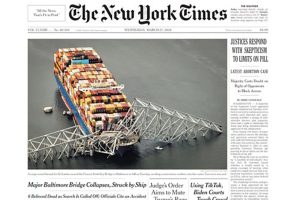
As the nation woke up to news of the Baltimore Key Bridge disaster on March 26, Hopkins Civil Engineers offered their insight into the collapse, rescue, and recovery efforts through local, national, and international media outlets.
Structural engineer Benjamin Schafer, Willard and Lillian Hackerman Professor of Civil and Systems Engineering, shared his expertise with Scientific American, New York Times, Washington Post, Baltimore Sun, CBS News, NPR’s Morning Edition, and many other outlets.
“If you look at the size of the ships from the 1970s, when the bridge was built, to now, it’s radically changed…There are going to be lessons learned on how we manage our bridge support structures with respect to protecting it from shipping traffic.”—Benjamin Schafer in Scientific American.
Associate Teaching Professor and EP Civil Engineering Program Chair Rachel Sangree, an expert in structural engineering and historic structures, offered her insights to NPR’s All Things Considered, Bloomberg CityLab, Baltimore Banner, and more.
“That design enables us to span longer distances with less material…But what it means is that when one of the piers was hit, it didn’t only affect two spans,” she told Bloomberg City Lab.